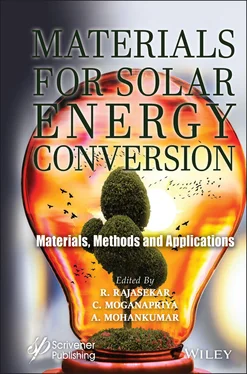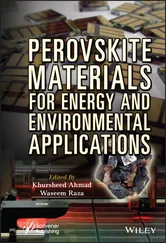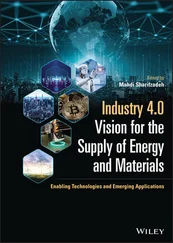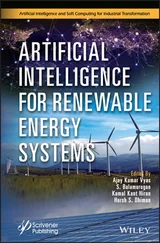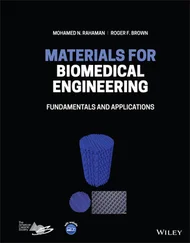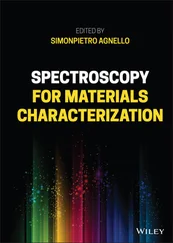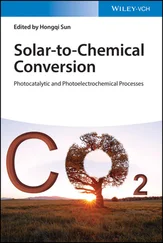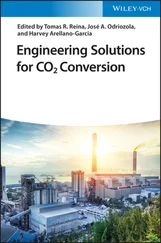Materials for Solar Energy Conversion
Здесь есть возможность читать онлайн «Materials for Solar Energy Conversion» — ознакомительный отрывок электронной книги совершенно бесплатно, а после прочтения отрывка купить полную версию. В некоторых случаях можно слушать аудио, скачать через торрент в формате fb2 и присутствует краткое содержание. Жанр: unrecognised, на английском языке. Описание произведения, (предисловие) а так же отзывы посетителей доступны на портале библиотеки ЛибКат.
- Название:Materials for Solar Energy Conversion
- Автор:
- Жанр:
- Год:неизвестен
- ISBN:нет данных
- Рейтинг книги:5 / 5. Голосов: 1
-
Избранное:Добавить в избранное
- Отзывы:
-
Ваша оценка:
- 100
- 1
- 2
- 3
- 4
- 5
Materials for Solar Energy Conversion: краткое содержание, описание и аннотация
Предлагаем к чтению аннотацию, описание, краткое содержание или предисловие (зависит от того, что написал сам автор книги «Materials for Solar Energy Conversion»). Если вы не нашли необходимую информацию о книге — напишите в комментариях, мы постараемся отыскать её.
This book provides professionals and students with a resource on the basic principles and applications of solar energy materials and processes, as well as practicing engineers who want to understand how functional materials operate in solar energy conversion systems.
Audience
Materials for Solar Energy Conversion — читать онлайн ознакомительный отрывок
Ниже представлен текст книги, разбитый по страницам. Система сохранения места последней прочитанной страницы, позволяет с удобством читать онлайн бесплатно книгу «Materials for Solar Energy Conversion», без необходимости каждый раз заново искать на чём Вы остановились. Поставьте закладку, и сможете в любой момент перейти на страницу, на которой закончили чтение.
Интервал:
Закладка:
In account of solar energy always should starts with the energy source as the sun. The mass of the sun is approximately 10 24tonnes, a diameter of 1,392,082 km, and energy radiation takes place at the extend of 3.8 × 10 20megawatts [9]. For a billion of years, the stated results remain unchanged in a present scenario, but definitely from time to time, there are minor changes occur in the radiation of sun energy. Based on these factors, we have been considering the constant solar energy.
Solar constant may be as the average of incoming solar energy per unit area, and it has been measured on outer surface atmosphere in a plane perpendicular to the rays with a numerical value of 0.1353 W/cm 2. Solar Constant (S) = 1350 W/m 2(approximately) [10].
1.4 Heat Transfer Principles
Heat transfer is one of the energy transfers from high body region to a lower body region due to the potential difference of temperature gradient. There are numerous applications involved under this disciplines, which are as follows:
✓ Internal combustion engines
✓ Refrigerators and air conditioning systems
✓ Heating and cooling of fluids
✓ Radiators, etc.
The heat transfer is classified into three various modes: heat conduction, convention, and radiation. The same has been depicted in Figure 1.1.
1.4.1 Conduction
Heat conduction is a mechanism of heat transmission that takes place from one part of a material to another part of same material or from one region to another region through some physical contact that extends it. Pure conduction heat transfer takes place only in solids.
1.4.2 Convection
Convection heat transfer takes place between a solid body and fluid medium where the temperatures are different. Convection process always involves in case of fluid medium.
1.4.3 Radiation
Radiation is a process of heat transfer that will occur between two different body temperatures without a solid or a fluid medium as transmitting medium. The example of this process is electromagnetic waves where no medium is mandatory for its propagation.
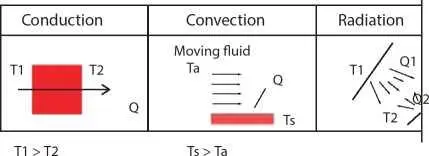
Figure 1.1 Various modes of heat transfer.
All the electromagnetic waves are categorized in terms of wavelength and it travels at a rate of speed as light which is C = 2.998 × 10 8m/s.
Properties of emission: The emission radiation depends on the following aspects by a body:
✓ Surface temperature
✓ Nature of surface
✓ Radiation frequency/wavelength
The following are the important parameters to deal the emission properties that are noted as emissive power (E b), monochromatic emissive power (E bʎ), emissivity (€), radiation intensity, radiosity, density, and pressure.
Concept of Black Body
A black body is an object which absorbs all the energy radiation from outer atmosphere to its receiving surface. A black body is a perfect emitter. For a black body α = 1, α = 0, and τ = 0.
Black body is an ideal surface that has the following properties:
✓ Black body absorbs all incident radiation irrespective of wavelength and directions.
✓ At a prescribed temperature, it emits larger amount of thermal radiation.
1.5 Basic Laws of Radiation
1.5.1 Stefan-Boltzmann Law
The Stefan-Boltzmann law is as the emissive power of a black body that is directly proportional to fourth power of its absolute temperature.

where E b- Black body emissive power (W/m 2)
σ - Stefan Boltzmann constant—5.67 × 10 –8W/m 2K 4
T - Absolute temperature (K)
1.5.2 Planck’s Law
Plank’s Law states that spectral distribution of radiation intensity of perfect black body is expressed by the following equation:

where
(Eb)λ - Single wavelength emissive power of a body
c - Light velocity
h - Planck’s constant
ʎ - Wavelength
k - Boltzmann constant
T - Absolute temperature
1.5.3 Wien’s Displacement Law
The relation between maximum emissive power wavelength and temperature of black body in given by the following expression:

1.6 Solar Energy Conversion
Solar energy can be converted into some other useful form of energy sources using different conversion technologies as in Table 1.4. The methods are photoelectric, photoelectric-photothermal, photothermal, photochemical, photocatalytic, and photo-electrochemical conversion.
Table 1.4 Energy conversion [11].
| Energy | From light | From chemical | From electrical | From mechanical | From heat |
| To Chemical | photo-synthesis | foods | electro-plating | Digestion of food | Gasifier |
| To Electrical | Solar cells | Powered torch light-battery Fuel cell | Transformer | Wave power Electric generator Windmill | Thermo-electric Geothermal Ocean-thermal power Thermo-couple |
| To Mechanical | photoelectric | Adenosine triphosphate hydrolysis Chemical Nutrients | Power drill | flywheel | Heat engines |
| To Light | laser | Most flame-characterized combustions Radium used to be painted | Electric lamp | spark | Match box |
| To Heat | Solar cells | Burning of wood Firing | Electric heater | Rubbing of hands together | Heat exchanger |
1.6.1 Sources of Renewable and Non-Renewable Energy
Renewable and non-renewable energy are of two types, in general, on the planet earth used by living organisms.
Renewable energy sources: Renewable energy sources are defined as the energy achieved from natural sources that are continuously produced by themselves for a day-to-day activity usage in a periods of time. These energy systems comprise sun, ocean waves, biomass (wastage of vegetable materials), hydel-power plants, and also some other such resources. This type of energy is also stated as green or sustainable or nonconventional energy sources.
Non-renewable energy sources: Non-renewable energy sources are defined as the fuel that do not rejuvenated itself continuously once utilized on the scale of levels that sustain its rate of consumption. These resources are presented in a larger amount of fixed quantities and used quickly as faster than nature could produce. Some best suitable instances are coal, nuclear energy, fossil fuels, natural gas, petroleum products, uranium, etc.
1.6.2 Differentiate Between Renewable and Non-Renewable Energy Sources
The difference in renewable and non-renewable energy sources was explained in Table 1.5.
Table 1.5 Difference in renewable and non-renewable energy sources.
| S.No | Aspects | Renewable energy | Non-renewable energy |
| 1 | Origin | Earth’s atmosphere— Not human made | Underground layers of Earth-Natural resources |
| 2 | Restrictions | Eco-friendly to use | Serious impact on environment leads to climatic change |
| 3 | Skills | Interdisciplinary | More awareness link with engineering terms |
| 4 | Life of Resources | Finite | Infinite and vanish |
| 5 | Scale | Small | Large |
| 6 | Impacts on environment | 3%–4% of CO 2 | 91%–94% of CO 2 |
| 7 | Harmful to environment | Less harmful | More polluted to air, water |
| 8 | Requirements of area | Larger | Smaller |
| 9 | Maintenance cost | High | Low |
| 10 | Safety Precaution | Less | More |
| 11 | Examples | Solar, tidal energy, ethanol, biofuels, methanol, biodiesel, etc. | Oil, natural gas, minerals, etc. |
1.7 Photo-Thermal Conversion System
Интервал:
Закладка:
Похожие книги на «Materials for Solar Energy Conversion»
Представляем Вашему вниманию похожие книги на «Materials for Solar Energy Conversion» списком для выбора. Мы отобрали схожую по названию и смыслу литературу в надежде предоставить читателям больше вариантов отыскать новые, интересные, ещё непрочитанные произведения.
Обсуждение, отзывы о книге «Materials for Solar Energy Conversion» и просто собственные мнения читателей. Оставьте ваши комментарии, напишите, что Вы думаете о произведении, его смысле или главных героях. Укажите что конкретно понравилось, а что нет, и почему Вы так считаете.
